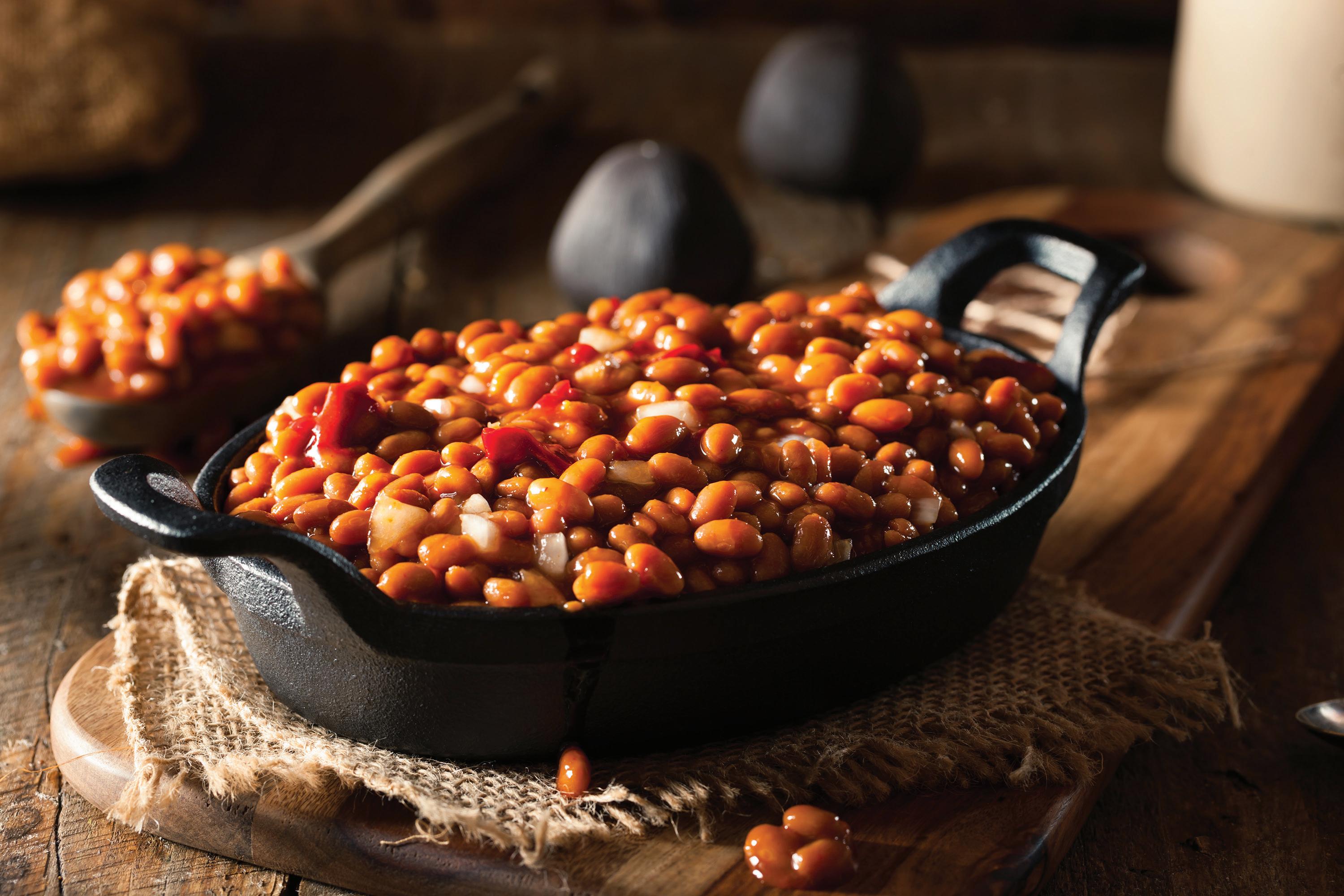
3 minute read
Doug The Food Guy: Baked Beans
from July 2022
by VIP Magazine
Baked Beans:
An Independence Day Staple
Advertisement
Thick, smoky, sweet, and savory baked beans
are a staple and easy economical meal. Some prefer them as a side, spooned on top of potatoes or for breakfast as some of our British friends like them on top of toast. You might even enjoy them cold, straight from the can. Whatever your preferred way to enjoy baked beans, the seemingly simple side dish packs in a surprising amount of history. Here’s the fascinating story behind the humble baked bean from its origins to its journey to the can. It’s tricky to pinpoint the exact beginning of the baked bean. The most widely accepted theory is that the modern canned variety has its origins in Native American cuisine. The beans were baked in earthenware pots with maple syrup and sometimes venison meat and even bear fat creating a dish prized for its high protein, calorie, and fat content. Baked beans as we know them are made with the same type of beans as those used in the indigenous American recipes, a type of bean known as navy beans. Early Pilgrims, who were Puritan Christians did not allow for working on Sunday, the Sabbath. Most of them spent the entire day in Church, which was usually a drafty and cold building, especially in the winter. No work on Sunday meant no cooking, therefore, no hot meal at the end of the day. Legend has it that these folks would prepare the beans on Saturday, and keep them in the warm wood oven until Sunday. Therefore, giving churchgoers a hearty meal when they returned. The ‘baked’ part may have stayed in the name, but many modern versions of the dish were not baked at all but were cooked over fire. The typical way to prepare was to simmer the beans into a stew with cubes of meat and spices. They were still known as ‘baked beans” even though they had not been baked.
Get more from Doug Smith by following him on Facebook and Instagram at "Doug the Food Guy".
Baked Beans
Ingredients:
• 1 pound dried navy beans • 8 ounces thick-cut bacon • 1 medium yellow onion, finely chopped • 2 cloves garlic, minced • 1/2 cup plain tomato sauce • 1/4 cup molasses • 1/2 cup brown sugar • 2 tablespoons apple cider vinegar • 1 tablespoon prepared yellow mustard • 2 teaspoons Worcestershire sauce • 1 teaspoon paprika • 2 teaspoons salt • 1/2 teaspoon freshly ground black pepper
Method:
• Place the dried beans in a pot of water covered by a few inches of water and let soak overnight. Drain the beans, place them back in the pot with fresh water and bring to a boil. Simmer for one hour, then drain, reserving the liquid. (See Note.) • In a Dutch oven cook the bacon until crispy then add the onions and cook until soft and translucent, 5-7 minutes. Add the garlic and cook for another minute. • Stir in the tomato sauce, molasses, brown sugar, apple cider vinegar, mustard, Worcestershire sauce, smoked paprika, salt, and pepper. • Add 1 1/2 cups of the reserved bean water and the beans. • Bring everything to a simmer and cover for 2 to 3 hours. What is Shepherd’s Pie?
Note: If at any point during the cooking process The pie consists of three layers. The upper and bottom layers have mashed potato and the too much liquid evaporates and the beans get dry, add a little more of the reserved bean water. The middle layer is meat. Some people put the meat beans themselves can vary from batch to batch in a sauce of onion, vegetables, or whatever and you may end up either needing to add more they had around the house. It is a fun meal to experiment with and can be great using liquid if the beans are too dry or you may need to whatever leftovers you have.cook the beans longer with the lid off if there is too much liquid.








